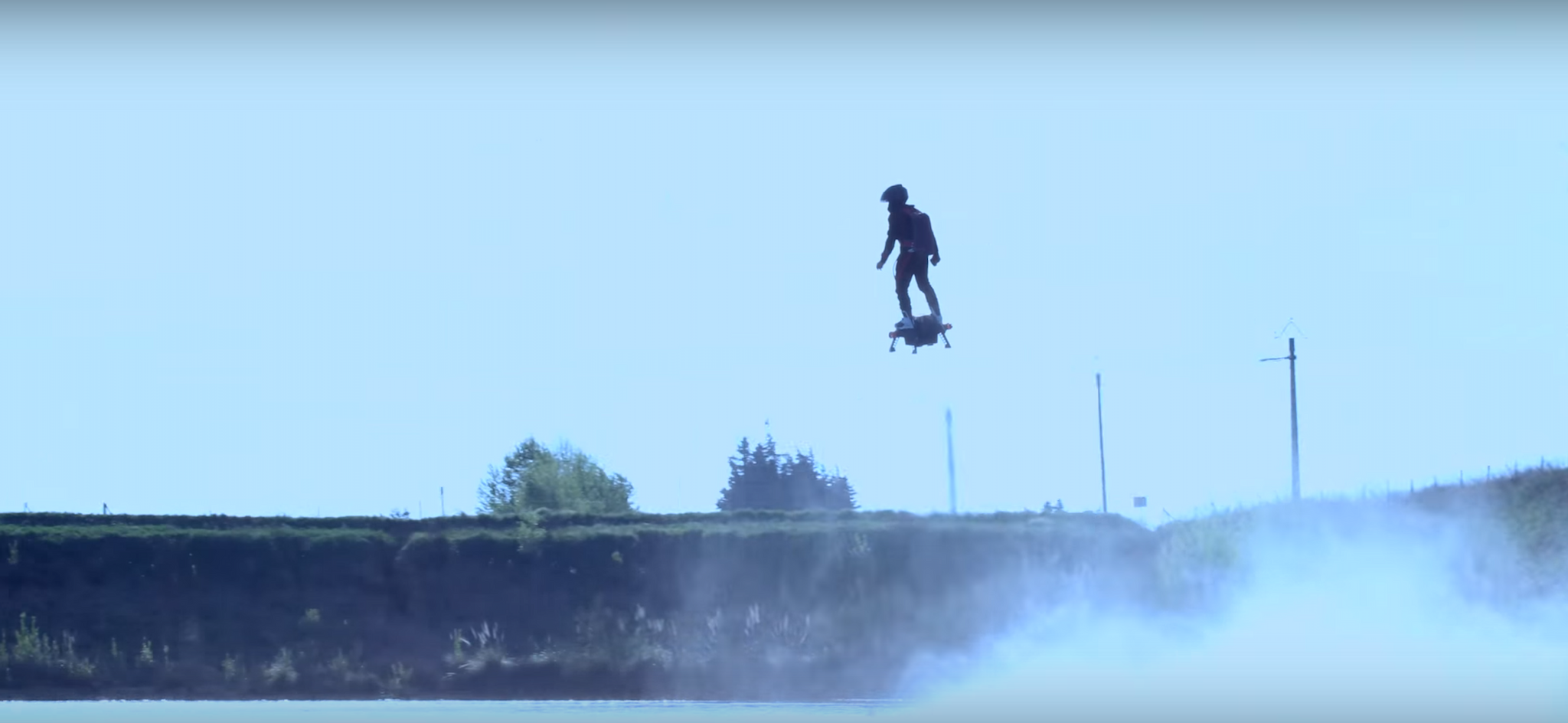The Dawn Of The Hoverboard
Remember when the concept of a hoverboard was only something seen in cartoons or comic strips? Even imagining that something like this could one day exist seemed farfetched.
But in 2011, the world met Franky Zapata's new invention - the Flyboard.
The Flyboard is essentially a platform that you stand on that's hooked up to a jet propulsion device. It shoots out water to give enough thrust to lift you 29.5 feet (9 meters) into the air. You can stay suspended for enough time to perform an array of aerobatics to impress onlookers.
In no time, the Flyboard became a must-do for tourists on vacation. But it wasn't the easiest thing to maneuver. It required a lot of core strength and could quickly send someone face-first into the water pit (and as we all know, a face-flop is decidedly not fun times).
But even with its limited maneuverability, people still loved the Flyboard. Who wouldn't want to fly?
The Dawn Of The Hoverboard 2.0
Now, Zapata just released the Flyboard Air. Zapata claims that this Flyboard 2.0 gets rid of the water jet and supplements a jet turbine engine. No more jet ski, no more hose, and no more tether. Instead, the whole things appears to be powered by a jet turbine engine and backpack fuel tank.
We say "appears" because, unfortunately, there is very little information related to how the device actually works. And things only get more suspect from there.
Zapata claims that the board can send its rider—terrifyingly untethered—to a maximum height of 3,048 meters (10,000 feet). If you don't know, at such a height, there are some changes in the oxygen levels. Not enough to make you pass out, but soaring up on a tiny board? Probably not a good life choice.
Zapata also claims that it has a maximum endurance of 10 minutes (so presumable you'd soar to 10,000 feet really fast) and a whopping ground speed of up to 150 km/h (93 mph). An obvious concern: What happens in the case of engine failure? You just plummet to your death? How are you able to keep yourself steady? How is it controlled? Even at lower heights (like the ones shown in the video), what happens when you fall?
All very good questions, but basically, this tech seems sure to get you killed...assuming that it is real. Check out the video below, and judge the claims for yourself.
Share This Article
